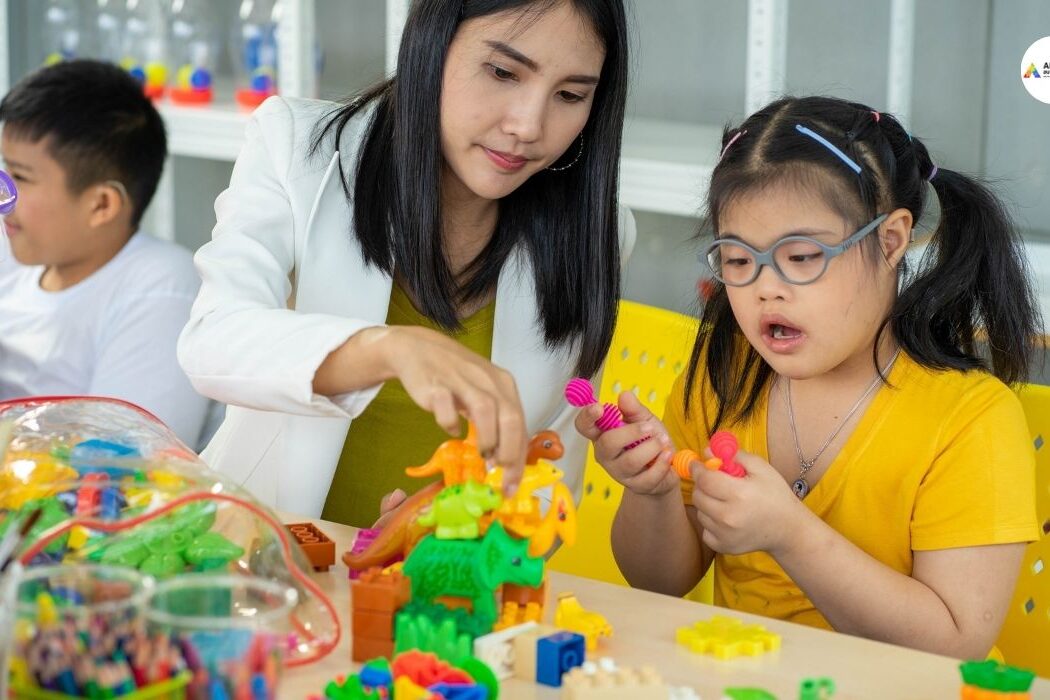Children diagnosed with Autism Spectrum Disorder (ASD) often require specialized interventions to help them navigate the world around them. Applied Behavior Analysis (ABA) is a scientifically validated approach that has shown significant efficacy in improving various skills in children with autism. While ABA is commonly practiced in clinical settings, implementing ABA techniques at home can further enhance a child’s progress and foster skill generalization. This comprehensive guide aims to provide parents and caregivers with practical strategies for integrating ABA techniques into their home environment to support children with autism.
Understanding Applied Behavior Analysis (ABA)
Applied Behavior Analysis (ABA) is a systematic approach to understanding and changing behavior. It focuses on identifying the environmental factors that influence behavior and implementing strategies to promote desired behaviors while reducing challenging ones. ABA interventions are highly individualized and target specific skills across various domains, including communication, social interaction, academic skills, and adaptive behaviors.
Key Principles of ABA
Before delving into specific techniques, it’s essential to grasp the foundational principles of ABA:
Antecedent-Behavior-Consequence (ABC) Model: This model suggests that behavior is influenced by events that occur before (antecedent) and after (consequence) the behavior. By manipulating antecedents and consequences, desirable behaviors can be encouraged, and undesirable behaviors can be reduced. This understanding forms the basis of interventions commonly applied in an ABA therapy center.
Reinforcement: ABA utilizes positive reinforcement to strengthen desired behaviors. Reinforcement can be in the form of tangible rewards, praise, or access to preferred activities.
Prompting: Prompting involves providing cues or assistance to help a child initiate or complete a desired behavior. Prompting is gradually faded as the child becomes more independent.
Generalization: ABA aims to promote the generalization of skills across different settings, people, and materials to ensure lasting behavior change.
Implementing ABA Techniques at Home
Now, let’s explore practical strategies for implementing ABA techniques at home to support children with autism:
Functional Communication Training (FCT)
Identify communication goals: Determine specific communication skills to target, such as requesting items, expressing needs, or initiating social interactions.
Use visual supports: Visual aids, such as picture cards or communication boards, can help children understand and express their wants and needs.
Reinforce communication attempts: Immediately reinforce any attempt at communication, even if it’s nonverbal or unconventional, to encourage further attempts.
Discrete Trial Training (DTT)
Break tasks into smaller steps: Divide target skills into manageable components to facilitate learning.
Provide clear instructions: Use simple, concise language and provide one instruction at a time to avoid overwhelming the child.
Use systematic prompting: Gradually fade prompts as the child demonstrates mastery of the skill to promote independence.
Natural Environment Teaching (NET)
Embed learning opportunities: Capitalize on everyday situations to teach relevant skills, such as turn-taking during play or following simple instructions during daily routines.
Follow the child’s interests: Incorporate the child’s preferences and interests into activities to increase engagement and motivation.
Offer choices: Provide opportunities for the child to make choices within structured activities to promote autonomy and decision-making skills.
Behavior Management
Establish clear expectations: Set clear rules and expectations for behavior, and consistently reinforce appropriate behaviors with praise and rewards.
Use visual schedules: Visual schedules can help children understand and anticipate daily routines, reducing anxiety and promoting independence.
Implement consequences consistently: Consistently apply consequences for both desirable and undesirable behaviors to promote consistency and predictability.
Data Collection and Analysis
Keep records: Maintain detailed records of the child’s progress, including specific behaviors targeted, interventions implemented, and outcomes observed.
Analyze data: Regularly review and analyze data to identify patterns, track progress, and make informed adjustments to interventions as needed.
Creating a Supportive Environment:
Designate a quiet space: Establish a designated area in the home where the child can engage in activities without distractions, particularly if they are sensitive to noise or sensory stimuli.
Arrange autism-friendly activities: Incorporate sensory activities that cater to the child’s sensory preferences, such as using sensory bins, weighted blankets, or fidget toys.
Structure daily routines: Establish consistent daily routines with clear transitions between activities to provide predictability and reduce anxiety for the child.
Encourage relaxation techniques: Teach the child relaxation techniques, such as deep breathing exercises or progressive muscle relaxation, to help them manage stress and regulate emotions.
Collaborating with Professionals:
Seek guidance from professionals: Consult with ABA therapists, speech-language pathologists, occupational therapists, and other professionals who specialize in working with children with autism to develop comprehensive intervention plans.
Attend parent training sessions: Participate in parent training programs offered by ABA providers or autism organizations to learn effective strategies for supporting your child’s development at home.
Communicate with the treatment team: Maintain open communication with your child’s treatment team to share observations, discuss progress, and collaborate on intervention strategies that align with your child’s needs and goals.
Promoting Independence and Life Skills:
Teach self-care skills: Break down daily self-care tasks, such as dressing, grooming, and feeding, into manageable steps and provide opportunities for the child to practice these skills independently.
Foster independence in daily tasks: Encourage the child to participate in household chores and activities of daily living, such as setting the table, sorting laundry, or grocery shopping, to promote independence and build practical life skills.
Develop functional skills: Focus on teaching practical skills that are relevant to the child’s daily life, such as money management, time management, cooking, and navigating community resources.
Building Social Connections:
Facilitate peer interactions: Arrange playdates or social outings with peers who demonstrate patience and understanding, and provide guidance and support as needed to facilitate positive social interactions.
Encourage participation in group activities: Enroll the child in structured group activities or clubs that align with their interests, such as sports teams, art classes, or scouting groups, to promote social skills development and foster friendships.
Model social skills: Demonstrate appropriate social behaviors and communication skills during interactions with the child and encourage them to observe and imitate these behaviors in social settings.
Celebrating Progress and Success:
Acknowledge achievements: Celebrate the child’s accomplishments, no matter how small, and provide praise and encouragement to reinforce their efforts and build self-confidence.
Set realistic goals: Establish achievable short-term and long-term goals based on the child’s abilities and interests, and celebrate progress toward these goals to maintain motivation and momentum.
Focus on strengths: Recognize and nurture the child’s strengths and interests, and provide opportunities for them to showcase their talents and skills in areas where they excel.
Conclusion
Implementing ABA techniques at home requires dedication, patience, and collaboration with professionals, but the rewards are invaluable. By creating a supportive environment, collaborating with professionals, promoting independence and life skills, building social connections, and celebrating progress and success, parents and caregivers can empower children with autism to reach their full potential and thrive in all aspects of life. With commitment and determination, families can create a nurturing home environment where children with autism can flourish and lead fulfilling lives.
For further support and guidance on implementing ABA techniques or In-home ABA Therapy with experienced professionals, please visit us at Advanced Autism Services.
FAQs
What is Applied Behavior Analysis (ABA) and how does it benefit children with autism?
Applied Behavior Analysis (ABA) is a systematic approach focused on understanding and modifying behavior. It helps children with autism by identifying environmental factors influencing behavior and implementing strategies to encourage desired behaviors while reducing challenging ones. ABA interventions are personalized and target various skills such as communication, social interaction, academics, and adaptive behaviors.
What are the key principles of ABA that parents and caregivers should know?
The key principles of ABA include the Antecedent-Behavior-Consequence (ABC) Model, reinforcement, prompting, and generalization. The ABC model emphasizes events occurring before and after behavior, while reinforcement strengthens desired behaviors. Prompting involves providing cues or assistance, gradually fading as independence grows. Generalization promotes the application of skills across different settings, people, and materials.
How can Functional Communication Training (FCT) be implemented at home?
Functional Communication Training involves identifying communication goals, using visual supports like picture cards, and reinforcing communication attempts promptly, even if nonverbal. This encourages further attempts and enhances communication skills.
What is Discrete Trial Training (DTT) and how can it be utilized in a home setting?
Discrete Trial Training breaks tasks into smaller steps, provides clear instructions, and uses systematic prompting, gradually faded as mastery is achieved. This approach facilitates learning by simplifying target skills into manageable components.
What is Natural Environment Teaching (NET) and how can it be incorporated into daily activities at home?
Natural Environment Teaching utilizes everyday situations to teach relevant skills, capitalizing on the child’s interests and preferences. It involves embedding learning opportunities, following the child’s interests, and offering choices within structured activities to promote engagement and motivation.
How can parents effectively manage behavior at home using ABA techniques?
Parents can establish clear expectations, use visual schedules, and implement consequences consistently for both desirable and undesirable behaviors. This promotes consistency, predictability, and positive behavior outcomes.
Why is data collection and analysis important in implementing ABA techniques at home?
Keeping records allows parents to track the child’s progress, identify patterns, and make informed adjustments to interventions as needed. Regular analysis of data ensures effective implementation and continual progress monitoring.
How can parents create a supportive environment at home for children with autism?
Parents can designate a quiet space, arrange autism-friendly activities, structure daily routines, and encourage relaxation techniques to create a supportive environment that promotes comfort and reduces stress.
How should parents collaborate with professionals when implementing ABA techniques at home?
Parents should seek guidance from ABA therapists and other professionals, attend parent training sessions, and maintain open communication with the treatment team to develop comprehensive intervention plans aligned with the child’s needs and goals.




